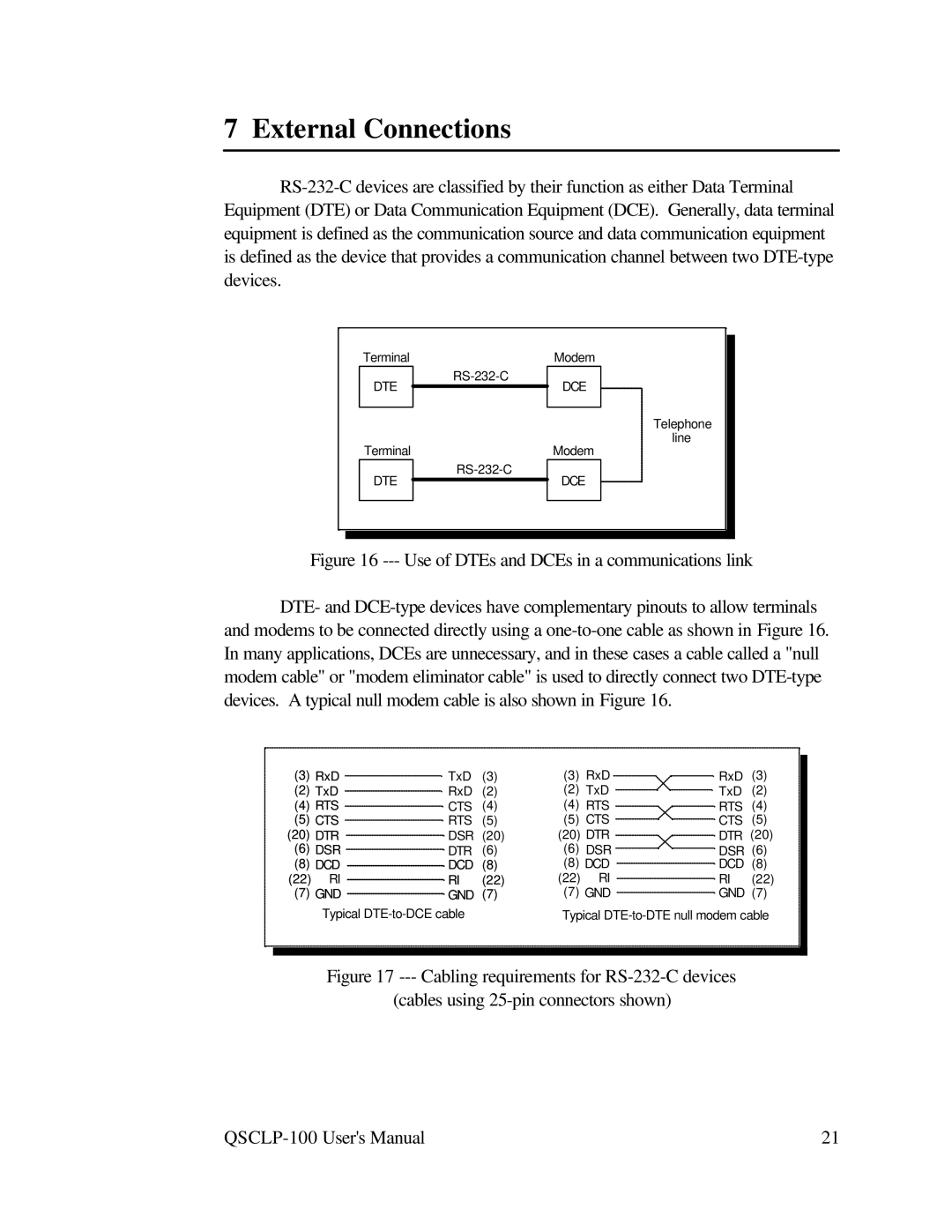QSCLP-100 specifications
The Quatech QSCLP-100 is a versatile and reliable serial-to-USB device server designed for seamless connectivity in industrial and commercial applications. This innovative device bridges the gap between legacy serial devices and modern USB interfaces, simplifying the process of integrating older technology with newer systems. With its robust design, the QSCLP-100 enables users to connect multiple serial devices to a single USB port, enhancing efficiency and productivity.One of the standout features of the QSCLP-100 is its ability to support a wide range of serial protocols, including RS-232, RS-422, and RS-485. This flexibility allows it to interact with various devices, such as printers, scanners, and industrial equipment. By converting serial signals into USB, it provides a straightforward way to connect these devices to computers, laptops, or other USB-enabled systems.
The QSCLP-100 is equipped with advanced technologies that ensure high-speed data transfer and reliable communication. Its built-in buffering capacity allows for efficient handling of data flow between the connected devices and the host system, reducing the risk of data loss and ensuring smooth operation. Additionally, the device features automatic baud rate detection, which simplifies configuration and setup, allowing users to quickly get their devices up and running.
In terms of physical characteristics, the QSCLP-100 boasts a compact and durable design, making it well-suited for use in harsh environments. Its rugged casing protects it from dust, moisture, and other potential hazards, ensuring longevity and consistent performance. The device is also designed for easy installation, requiring minimal setup to begin operation.
Security is a top priority for the QSCLP-100, and it incorporates features such as data encryption and secure protocols to protect sensitive information during transmission. This makes it an excellent choice for industries that require stringent security measures, including healthcare, finance, and telecommunications.
In summary, the Quatech QSCLP-100 is a powerful and adaptable solution for connecting serial devices to USB systems. Its comprehensive feature set, robust design, and emphasis on reliability and security make it an ideal choice for businesses looking to modernize their technology without sacrificing functionality. The QSCLP-100 not only facilitates connectivity but also enhances overall operational efficiency, making it a valuable asset in any technological landscape.

